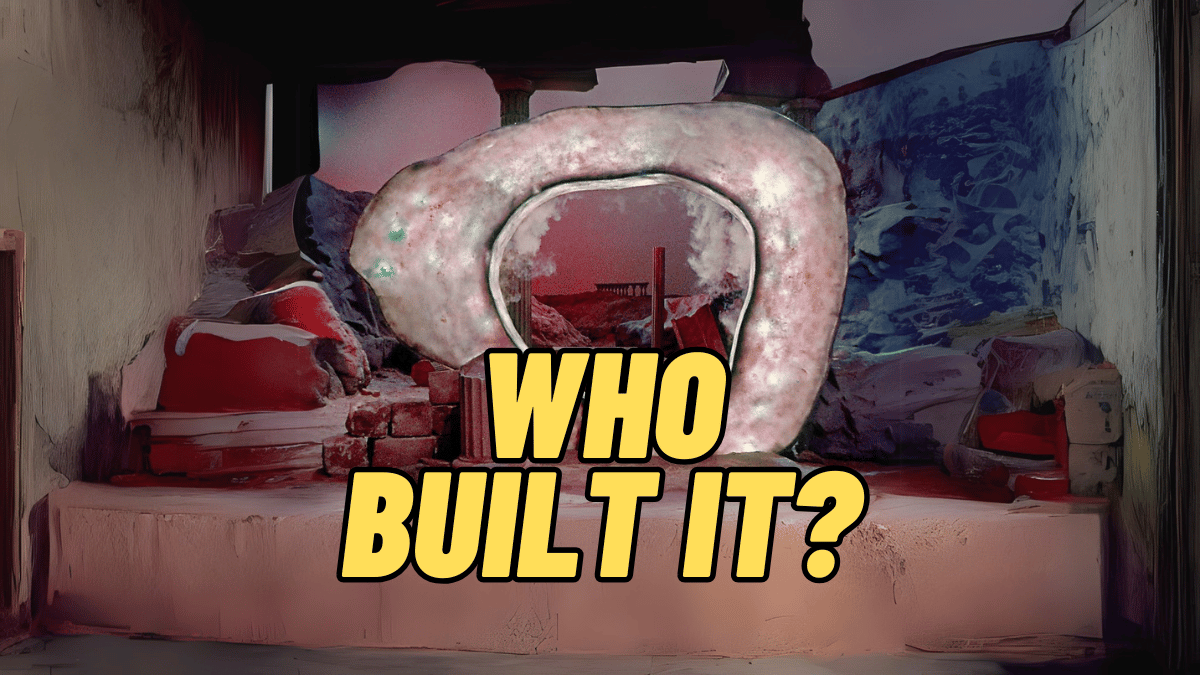The Guardian of Forever is one of Star Trek’s most enigmatic and enduring artifacts—a mysterious time portal featured in the classic episode “The City on the Edge of Forever” of Star Trek: The Original Series. Despite decades of analysis, fan theories, and scholarly debates, the question remains: Who built the Guardian of Forever?
The Iconic Artifact in Star Trek Lore
In the episode “The City on the Edge of Forever,” the Guardian serves as a gateway through time, capable of transporting beings across eras. Its swirling, ancient visage and cryptic inscriptions sparked immediate fascination among fans and critics alike. The episode, first broadcast in 1967, established the Guardian as a plot device that not only altered the lives of Captain Kirk and Mr. Spock but also set a benchmark for how time travel and mythic artifacts would be portrayed in science fiction.
The Guardian’s design—evoking both awe and mystery—has become an iconic symbol of the unknown in the Star Trek universe. Yet, its origins, the creators behind its construction, and the purpose it was originally meant to serve remain a subject of speculation.
Canonical Clues and In-Universe Theories
Within the confines of Star Trek canon, the episode offers few explicit details about the Guardian’s creation. The device appears almost as if it has always existed, guarding the timeline and ensuring that certain pivotal moments in history remain undisturbed. The episode’s dialogue hints at an ancient and powerful force behind its existence, yet no direct attribution is made to any known civilization or species.
Many fans have posited that the Guardian could be the product of a long-extinct race whose technology far surpassed that of even the Federation. Sites such as Memory Alpha compile these clues and debates, noting that the Guardian’s design and functionality suggest an origin steeped in myth and legend—a relic left behind by beings with a profound understanding of time and space.
The Creative Intent Behind the Guardian
Beyond the in-universe mystery, interviews with the creative team behind Star Trek offer another perspective. The Guardian of Forever was conceived as a narrative tool to explore the moral and ethical dilemmas of time travel. Its ambiguous origins allow writers to use the artifact as a “blank slate” onto which viewers can project their own ideas about fate, consequence, and the nature of history.
In many ways, the lack of a definitive answer about its creators enhances the Guardian’s mystique. Instead of tying it to a specific race or historical event, the writers of Star Trek imbued the Guardian with a timeless quality—a symbol of the unknowable that challenges both characters and viewers to ponder the larger questions of existence.
Fan Theories and Scholarly Debate
Over the years, numerous fan theories have emerged regarding the construction of the Guardian of Forever. One popular theory suggests that the Guardian was built by a proto-Federation civilization—ancient beings whose remnants might still be found in the far reaches of the galaxy. Another theory points to an extraterrestrial architect whose technology was so advanced that even the Federation’s best minds remain baffled by its mechanisms.
A Memory Beta article explores these theories in depth, drawing parallels between the Guardian’s design and other ancient, mysterious structures in science fiction and real-world history. These comparisons invite readers to consider whether the Guardian was intended to be a metaphor—a reminder that some truths about our universe may forever lie just beyond our grasp.
References in Other Episodes and Expanded Media
Although the Guardian of Forever has not been a recurring element in later Star Trek series, its influence is felt in various forms. For instance, references to ancient, time-altering devices appear in episodes of Star Trek: Deep Space Nine and Star Trek: Voyager. These nods to the Guardian help maintain its legendary status in the broader Star Trek mythos.
Additionally, the Guardian has been explored in several non-canon sources and fan publications. Books such as The Star Trek Encyclopedia and numerous online articles provide extended analyses and speculative histories of the artifact. These sources, while not officially endorsed by CBS, add layers of complexity to the discussion of who might have built the Guardian and why.
Why the Mystery Endures
The enduring allure of the Guardian of Forever lies in its mystery. By leaving its origins open-ended, Star Trek invites its audience to engage in creative speculation. Whether you lean towards the theory of an ancient, forgotten civilization or see the Guardian as a metaphor for the inexorable march of time, the device serves as a powerful reminder of science fiction’s ability to provoke thought and inspire wonder.
For those interested in diving deeper, exploring the Memory Alpha page provides a comprehensive overview of what is known—and what remains unknown—about this fascinating artifact.
Conclusion: Embracing the Enigma
While we may never have a definitive answer to the question, “Who built the Guardian of Forever?”, its mystery is precisely what keeps the conversation alive among fans and scholars alike. The Guardian is more than just a plot device; it is a symbol of the eternal questions that science fiction grapples with—about time, destiny, and the vast, unknowable universe we inhabit.
In embracing the ambiguity of the Guardian, Star Trek challenges us to look beyond the obvious and explore the deeper, often unanswerable questions about our own existence. Whether you’re a seasoned Trekkie or a newcomer to the franchise, the enigma of the Guardian of Forever remains a compelling invitation to ponder the mysteries of the cosmos.
Further Reading and References:

